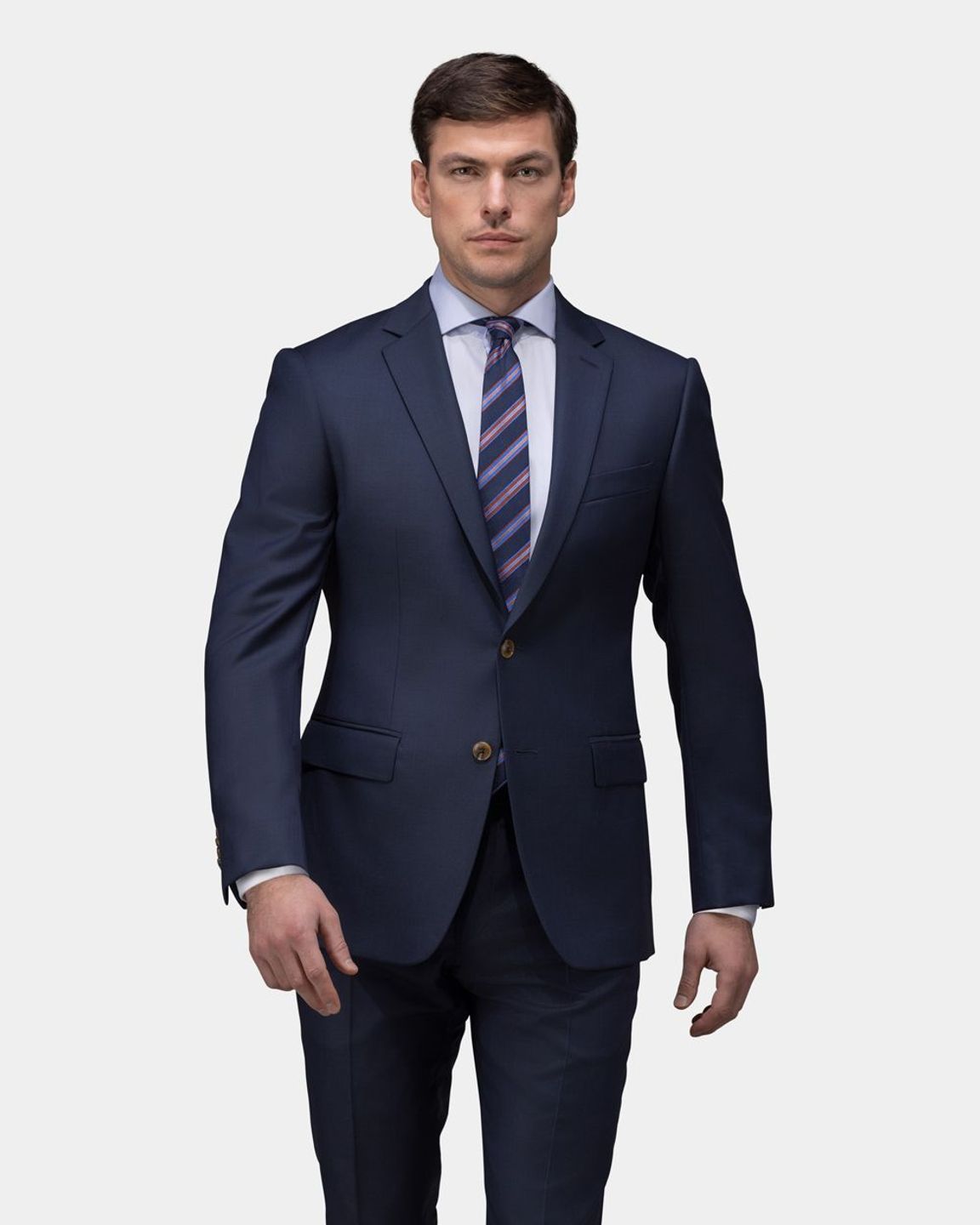Tailored Suits Perth: Elevate Your Style with Custom Suits
Wiki Article
Comprehending the Tailoring Refine: From Material Choice to Last Fitting for the Perfect Closet
The customizing procedure is a complex interaction of art and scientific research, starting with the critical decision of material selection and culminating in the specific changes of last fittings. Each textile type brings distinct high qualities that affect not just the aesthetic charm yet also the garment's durability and viability for different events.Value of Material Choice
Picking the appropriate textile is important in the tailoring process, as it straight influences the convenience, longevity, and general visual of the final garment. The option of fabric sets the foundation for the garment's efficiency, capability, and design. Various textiles have distinct buildings, such as breathability, stretch, and weight, which can dramatically impact exactly how the garment drapes and fits the body.
A tailored item made from an appropriate fabric not only showcases craftsmanship but likewise raises the user's confidence. Understanding the nuances of fabric choice is vital for any kind of tailoring endeavor. It guarantees that the last item not just meets the aesthetic desires of the client but likewise aligns with functional demands, thus achieving an unified balance in between kind and feature in the tailored wardrobe.
Sorts Of Fabrics and Their Usages
Recognizing the different kinds of fabrics offered is crucial for making notified choices throughout the tailoring process. Each textile has special attributes that dictate its suitability for certain garments and celebrations.Cotton, understood for its breathability and gentleness, is optimal for laid-back wear and summertime clothes. Its versatility permits it to be tailored into everything from t-shirts to outfits. Woollen, on the other hand, is favored for its heat and structure, making it an outstanding option for official suits and outerwear. Its all-natural flexibility helps garments preserve form in time.
Silk exudes luxury and is lightweight, making it perfect for eveningwear and fragile blouses; however, it requires cautious handling because of its frailty. Linen, with its textured finish, is a prominent choice for cozy climates, supplying a crisp and ventilated feel, but it wrinkles easily, which may affect the garment's look.
Synthetic textiles, such as polyester and nylon, deal sturdiness and resistance to creases, making them suitable for day-to-day wear and energetic apparel. Recognizing these textile types and their buildings permits for far better decision-making, making certain that each customized piece not only fits well yet additionally aligns with the designated purpose and occasion.
The Tailoring Techniques Clarified
The art of tailoring relies upon a variety of strategies that transform textile right into well-fitted garments. Central to this procedure is pattern composing, where a dressmaker creates templates based upon the customer's measurements and preferred style. This preliminary action makes sure that the garment will fit the wearer correctly before any cutting takes place.As soon as patterns are developed, reducing methods enter into play. Precision is paramount as errors can lead to misfitting garments. Tailors typically make use of numerous cutting techniques, such as single-layer reducing for intricate designs and multiple-layer cutting for performance on common patterns.
Basting is one more crucial technique, permitting dressmakers to briefly sew textile assemble for a preliminary installation (wedding suits perth). This method supplies the possibility to evaluate the drape and general shape before final stitching
Seaming techniques, consisting of flat-felled seams and French joints, boost the garment's longevity and visual appeal. Tailors additionally employ techniques such as interfacing and padding to offer structure and shape to particular locations, like collars and shoulders.
Finally, completing techniques, including hemming and side finishing, ensure the garment's durability while offering a polished appearance. With each other, these navigate to these guys techniques form the foundation of efficient tailoring, leading to exquisite, custom-fit clothing.

Suitable Modifications and Factors To Consider
After the preliminary tailoring methods have been applied and the garment is created, fitting changes read here end up being vital to achieving the perfect fit. These adjustments address various facets of the garment, guaranteeing it contours to the user's physique and enhances general appearance.
The increase of trousers is an additional vital factor; it should rest pleasantly above the hips without creating discomfort, permitting ease of movement. Hemming lengths for both trousers and skirts need to show the user's favored style while valuing proportions.
Moreover, attention needs to be offered to the rear of the garment, making certain that there are no unpleasant pulls or excess textile - top tailor perth. Each modification should be meticulously thought about, as also small modifications can dramatically influence the overall fit and aesthetic of the customized item, inevitably leading to a closet that radiates self-confidence and class
Preserving Your Tailored Attire
Proper maintenance of tailored garments is essential to preserving their fit and appearance gradually. To guarantee long life, routine cleansing is paramount. Constantly comply with the treatment label instructions, which may advise dry cleansing for delicate fabrics or maker washing for more sturdy materials. Stay clear of frequent laundering, as this can use down the fabric and modify the garment's form.Storage is just as crucial; usage cushioned hangers for jackets and layers to keep shoulder structure, and store trousers folded neatly or hung to protect against creasing. Protect garments from straight sunshine, which can discolor shades and damages fibers.
Furthermore, regular assessments for small repair services can protect against larger problems. Check for loose switches, fraying joints, or indications of moth damages, addressing these troubles quickly to preserve the garment's integrity.
Lastly, consider seasonal rotation. Using tailored pieces in moderation enables textiles to recover, prolonging their life-span. By executing these maintenance techniques, you can guarantee that your tailored garments remain as immaculate as the day you initially wore them, enhancing your perfect closet for years to find.
Verdict
The tailoring process, incorporating textile choice, competent methods, and precise fitting adjustments, plays a critical function in creating garments that boost both convenience and style. Each stage adds to the overall effectiveness of the end product, making sure that clothes not anonymous just fits well however also mirrors private identity. Moreover, comprehending the importance of upkeep extends the life of customized garments, solidifying their worth in a well-curated closet. A comprehensive strategy to tailoring culminates in a polished and confident appearance.Report this wiki page